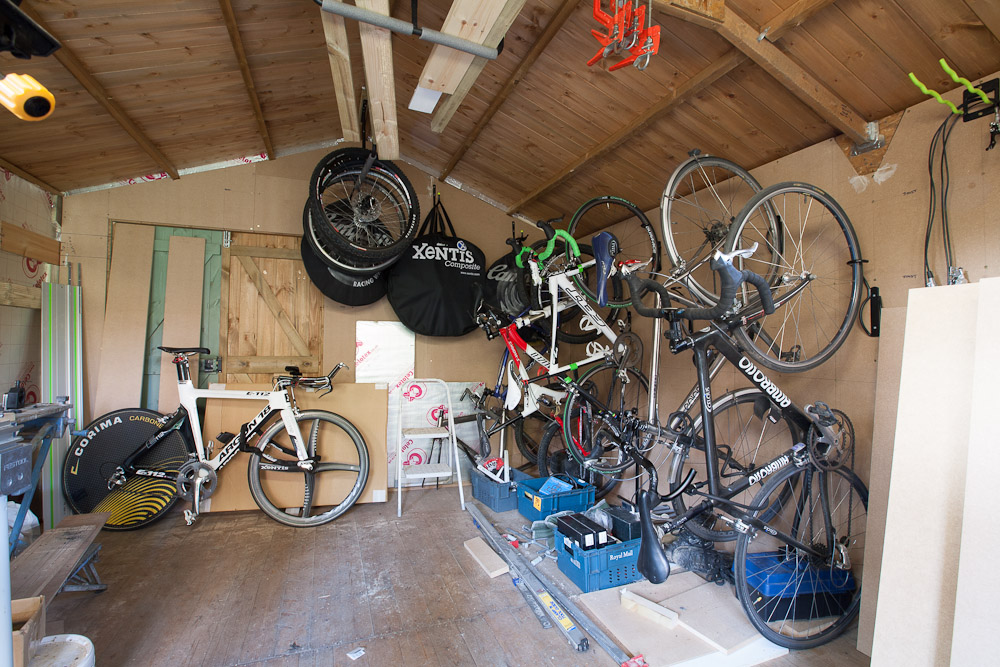Apols for the book but I'm back on to the man cave now that winter's here and have finally finished the interior lining.
Shed is 16 X 12 ship lap and I've added extra wall battens, infilled with 25mm celotex and lined with 18mm mdf.
Running a small fan heater in the recent cold weather has produced noticeable condensate on surfaces and kit within the storage cupboards.
The MDF walls have had one coat of undercoat so far and I'm wondering how many extra coats would be advisable to protect the mdf from damp? Would it also be worth buying a couple of those granular moisture absorbers just to keep on top of things?
The shed will predominately be used to store and work on my bikes as seen here

and in all honesty it's not going to be used day in day out as a workshop. Would one of those greenhouse anti frost heater jobbies be an idea to keep the temp regulated or do folk have other suggestions?
Cheers
Mike
P.S I have more questions on flooring, DGing the windows and so on but will save them for another post.
Shed is 16 X 12 ship lap and I've added extra wall battens, infilled with 25mm celotex and lined with 18mm mdf.
Running a small fan heater in the recent cold weather has produced noticeable condensate on surfaces and kit within the storage cupboards.
The MDF walls have had one coat of undercoat so far and I'm wondering how many extra coats would be advisable to protect the mdf from damp? Would it also be worth buying a couple of those granular moisture absorbers just to keep on top of things?
The shed will predominately be used to store and work on my bikes as seen here

and in all honesty it's not going to be used day in day out as a workshop. Would one of those greenhouse anti frost heater jobbies be an idea to keep the temp regulated or do folk have other suggestions?
Cheers
Mike
P.S I have more questions on flooring, DGing the windows and so on but will save them for another post.




